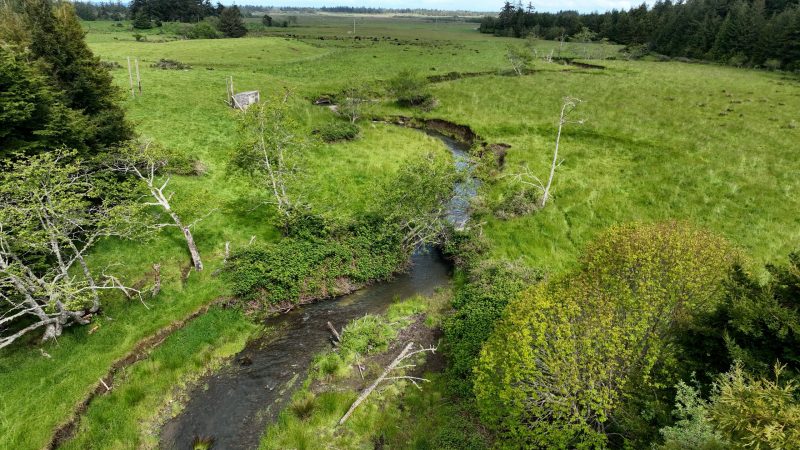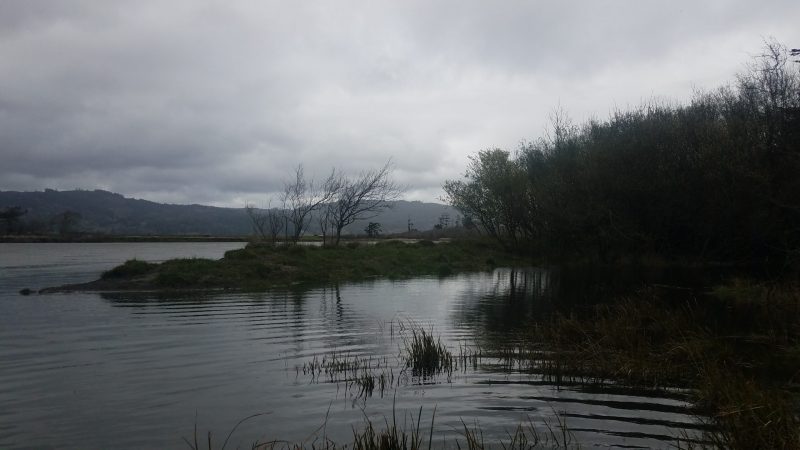The Smith River Alliance is leading this project, which will enhance a naturally occurring backwater feature on the south bank of the Smith River estuary, benefitting Southern Oregon and Northern Coastal California ESU Coho salmon, SONCC Chinook salmon, and Klamath Mountain Province Steelhead. The project will increase channel complexity along the mainstem Smith River and addresses impaired estuary function by increasing the quantity and quality of off-channel slow water rearing habitat and benefit up to 8,000 outmigrating Coho salmon smolts. Tidally influenced backwater habitat is extremely beneficial but rare in the Smith River estuary and this project will improve connectivity to this limited habitat. The project will enhance the hydrologic connection to 660 lineal feet of off-channel habitat, and increase the duration and range of flows that migrating and rearing juvenile Coho salmon can access the off-channel habitat feature by 94%. Two large wood structures containing 14 logs will be installed at the entrance and up to 13 single log structures will be installed throughout the backwater. The riparian area will be planted with native species including: 1,386 wetland plants, 114 herbaceous understory plants, 78 shrubs, and 120 trees. Livestock exclusion fencing will be installed along 1,800 feet to permanently exclude cattle from 51 acres of the Smith River estuary.

- July 4, 2023
- Joan Drinkwin
- Announcement, Funding
- 0 comments
The Curry Soil and Water Conservation District will restore channel processes, floodplain connectivity, instream and off-channel habitat, and 19 acres of native riparian forest on 2,500 feet of Morton Creek, which at present, is deeply incised and severely impacted by grazing. Restoration will enhance rearing, spawning, and migration habitat for coho salmon and steelhead; as well as Pacific lamprey. Restoration will improve water quality and reduce sedimentation in ~470 acres of freshwater wetland adjacent to the New River estuary. Project will also install riparian fencing and off-channel water to facilitate livestock grazing outside the stream corridor. The project goals are to improve water quality and instream habitat; restore floodplain connectivity and dynamic fluvial processes; enhance fish migration between upstream spawning and downstream rearing habitat; stabilize chronic bank erosion; and prevent pollutant loading to downstream fresh water wetlands and the New River estuary. The project involves construction of 2,500 feet of stream channel, 5.4 acres of floodplain topography, 800 feet of off-channel aquatic habitat, 20-30 instream log structures, 2 vehicle bridges, 2,500 feet of livestock exclusion fence, and an off-stream livestock water system; and the project will plant and maintain 21,000 seedlings, to restore 19 acres of native riparian forest.

